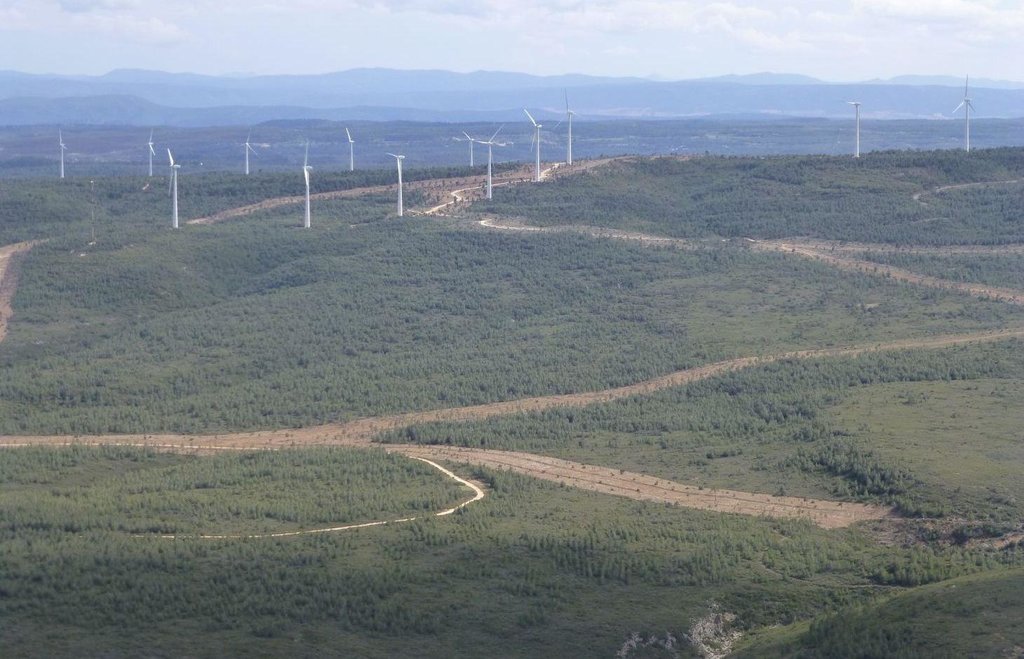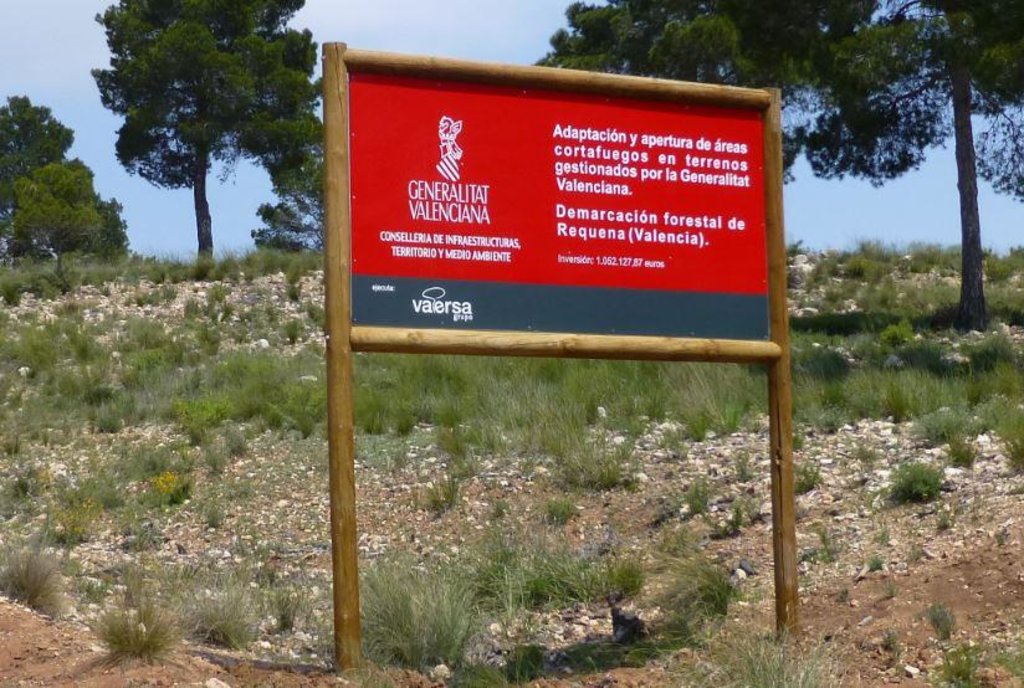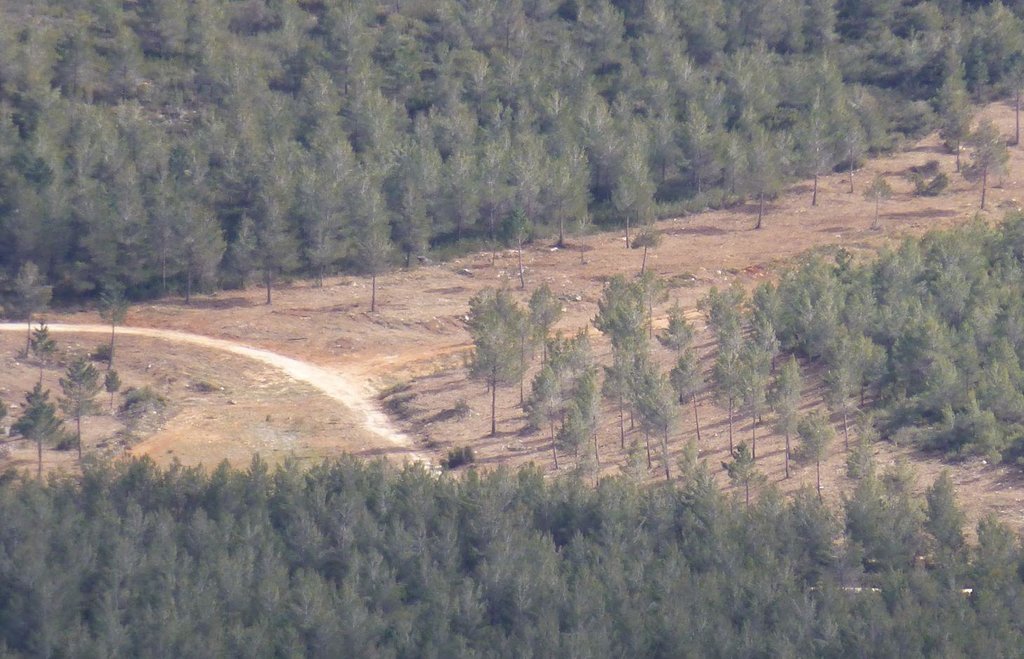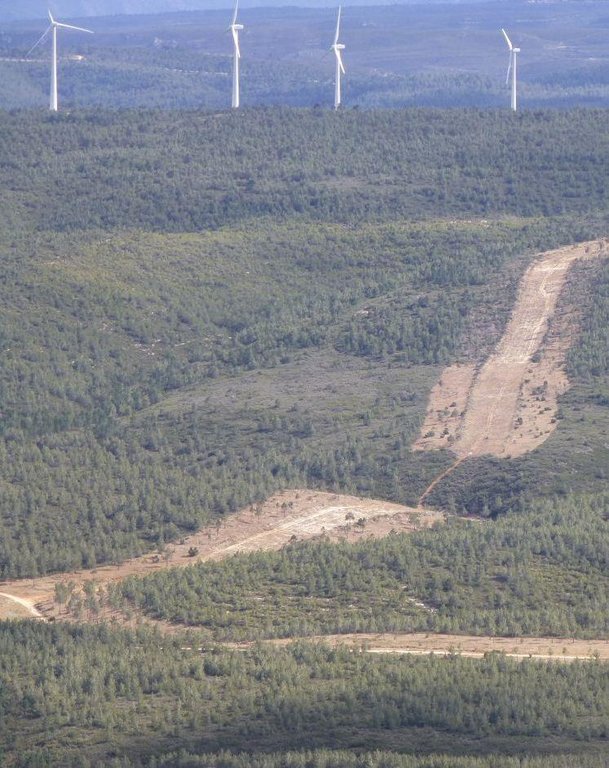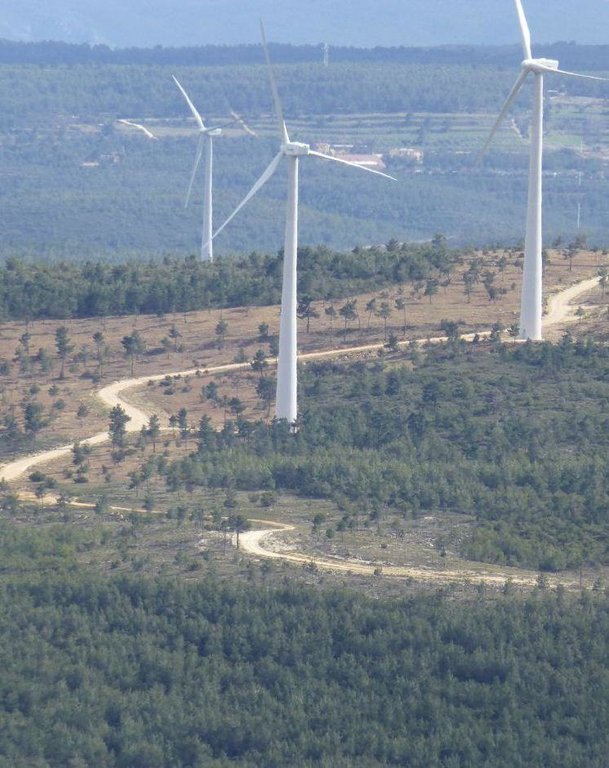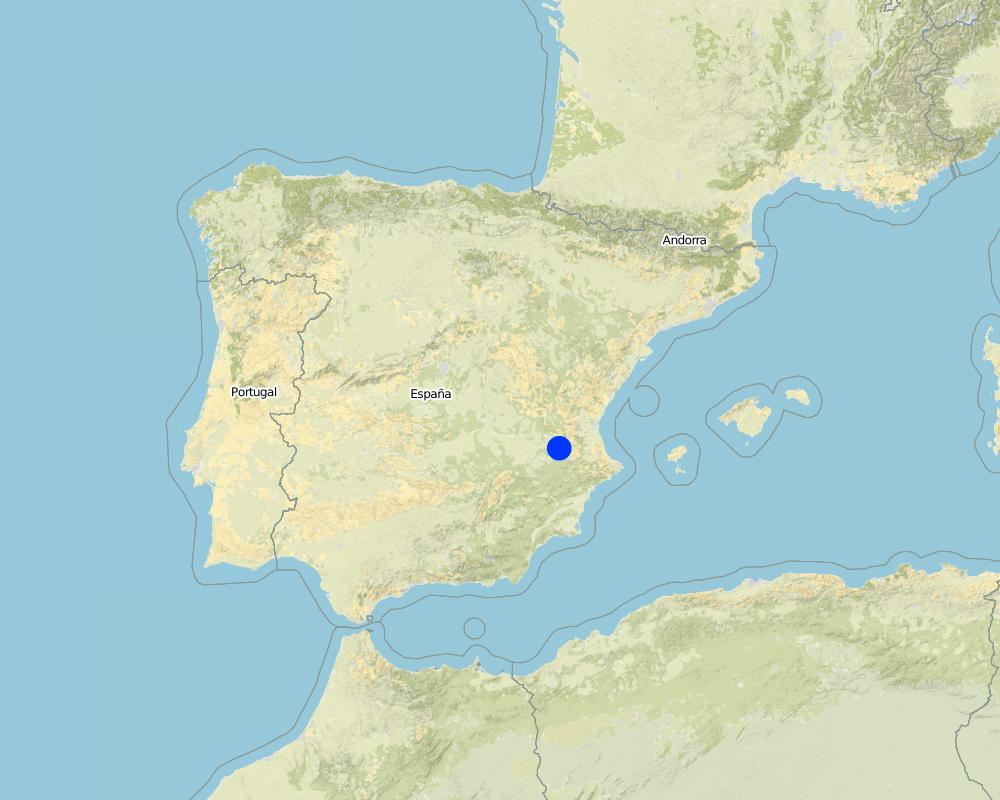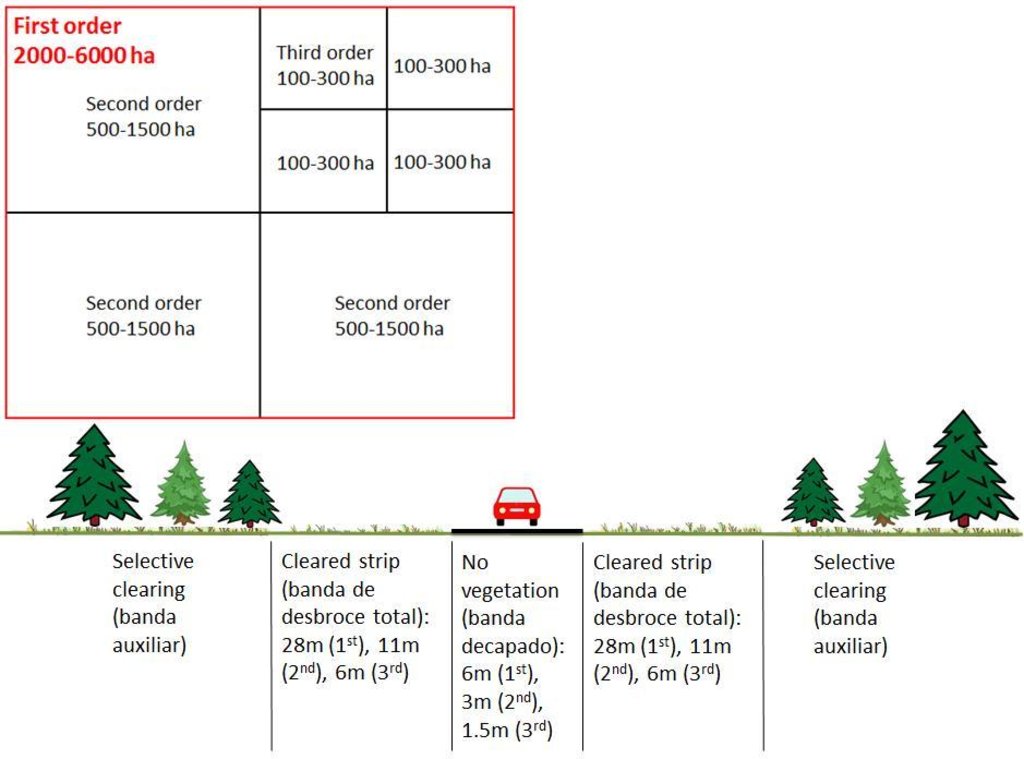Cleared strip network for fire prevention (firebreaks) [España]
- Creación:
- Actualización:
- Compilador: Nina Lauterburg
- Editor: –
- Revisor: Deborah Niggli
Área cortafuegos
technologies_1592 - España
- Resumen completo en PDF
- Resumen completo en PDF para imprimir
- Resumen completo en el navegador
- Resumen completo (sin formato)
- Cleared strip network for fire prevention (firebreaks): 3 de enero de 2017 (inactive)
- Cleared strip network for fire prevention (firebreaks): 15 de marzo de 2017 (inactive)
- Cleared strip network for fire prevention (firebreaks): 31 de julio de 2019 (inactive)
- Cleared strip network for fire prevention (firebreaks): 1 de diciembre de 2021 (public)
Visualizar secciones
Expandir todo Colapsar todos1. Información general
1.2 Detalles de contacto de las personas de referencia e instituciones involucradas en la evaluación y la documentación de la Tecnología
Nombre del proyecto que financió la documentación/ evaluación de la Tecnología (si fuera relevante)
Catastrophic shifts in drylands (EU-CASCADE)Nombre de la(s) institución(es) que facilitaron la documentación/ evaluación de la Tecnología (si fuera relevante)
Centro de Estudios Ambientales del Mediterraneo (CEAM) - España1.3 Condiciones referidas al uso de datos documentados mediante WOCAT
¿Cuándo se compilaron los datos (en el campo)?
06/05/2013
El compilador y la/s persona(s) de referencia claves aceptan las condiciones acerca del uso de los datos documentados mediante WOCAT:
Sí
1.4 Declaración de la sostenibilidad de la Tecnología descrita
¿La Tecnología aquí descrita resulta problemática en relación a la degradación de la tierra, de tal forma que no puede considerársela una tecnología sostenible para el manejo de la tierra?
No
2. Descripción de la Tecnología MST
2.1 Breve descripción de la Tecnología
Definición de la Tecnología:
The basic principle of a firebreak network is to split continuous forest areas (where a lot of fuel is built up) into smaller patches separated by vegetation-free strips in order to prevent large forest fires.
2.2 Descripción detallada de la Tecnología
Descripción:
In the forest law 3/1993 the declaration of special areas to “Zonas de Actuación Urgente (ZAU)” (zone of urgent actions) through the regional government of Valencia is defined. Objectives are the protection against natural hazards and the promotion of forest restoration within this area. Ayora was declared to a ZAU in 1997 due to its high risk of fires. In the “Plan de Selvicultura Preventiva de Incendios en los Sistemas Forestales de la Comunidad Valenciana” which became operative in 1996 and whose main objective is the reduction of the fire risk, the ZAU is practically addressed for the first time in the establishment of firebreaks (áreas cortafuegos). Based on this plan, the firebreaks were established within a pilot project “Proyecto Piloto de Selvicultura Preventiva” between 1998 and 2002, carried out by the company VAERSA (public company of the Generalitat Valenciana).
A firebreak is a strategically located strip on which the vegetation cover has been partially or totally removed down to mineral soil with the aim of controlling the spread of large forest fires. The main purposes are 1) to interrupt the continuity of hazardous fuels across a landscape to decrease the area affected by fires, 2) to provide areas where fire fighters are protected and can work more efficiently, 3) to slow down a fire, to reduce the fire intensity and caused damages, and 4) to provide strips where fuel management is facilitated. The total surface protected by the firebreaks is 33’851 ha while the management measures are executed on 1944,81 ha. This technology is also applied in other countries, e.g. Portugal, South Carolina or South Africa.
The establishment and maintenance are labour-intensive and expensive. Firebreaks can range between a protected area of 2000-6000 ha (first order), 500-1500 ha (second order), and 100-300 ha (third order), together forming a system isolating separate areas by wide strips. This parcelling aims in limiting the burnt area to a maximum of 6000 ha. Each firebreak consists of a bare vegetation-free strip (banda decapado). The width of the bare area ranges between 6m (first order), 3m (second order) and 1.5m (third order). Existing vegetation-free areas (e.g. roads) are used to establish firebreaks to have less visual impact. If there is no road, trees and shrubs have to be cleared and chipped entirely using chainsaws and special tractors. On each side of the bare area there is a totally cleared strip (banda de desbroce total). The width depends on the climatic zone, the order and the hazard of fuel, therefore ranging between 28m (first order), 11m (second order) and 6m (third order). Almost all the existing vegetation is cleared, only some isolated mature trees are not cut if they do not contribute to the propagation of a fire. On both sides of these strips there are auxiliary strips (banda auxiliar) where selective clearing is applied until reaching a desired density. Sick trees are cleared with priority. Species of high ecologic value and low flammability level are not cleared, such as Juniperus phoenicea, Juniperus oxycedrus and Quercus ilex ssp. rotundifolia. The width of these elements can vary according to the prevalent conditions. A part of the wood generated by the clearings is used as fuelwood, the other part is chipped and distributed on the soil as mulch. Firebreaks are often located on mountain ridges and created with 45° to the dominant wind direction (west) to facilitate fire extinction.
The maintenance of firebreaks is extremely important. Without clearing, fire-prone species will encroach which decreases the effectiveness of the firebreak. The maintenance is realized depending on the vegetation, usually in firebreaks of first order the maintenance is done every 2 years (“decapado” and “desbroce total”) or every 4 years (“banda auxiliar”) while firebreaks of second and third order are cleared every 4 years. In the here described project the maintenance was carried out in three phases (2001-2004, 2004-2008 and 2008-2012).
The region of Ayora is mountainous with a dry subhumid climate (~380 mm annual rainfall). The risk of fire incidence is at its highest from June to September when there are adverse conditions like drought, high temperatures and strong winds (mainly the winds coming from central Spain, called “poniente”). The population density is very low and there are only few job opportunities (e.g. marginal agriculture, grazing, hunting, beekeeping, artisanry, wind mill parc). Most of the inhabitants work in the nuclear power plant. Forest management could be a source for jobs.
2.3 Fotografías de la Tecnología
2.5 País/ región/ lugares donde la Tecnología fue aplicada y que se hallan comprendidos por esta evaluación
País:
España
Región/ Estado/ Provincia:
Spain, Valencia
Especifique más el lugar :
Region of Ayora (including the municipalities Requena, Cofrentes, Jalance, Jarafuel, Zarra, Ayora)
Comentarios:
Boundary points of the Technology area: The above indicated coordinates only show one firebreak (first order). But there is a whole system of firebreaks which is visible in the Google Earth file.
Map
×2.6 Fecha de la implementación
Si no se conoce el año preciso, indique la fecha aproximada:
- 10-50 años atrás
2.7 Introducción de la Tecnología
Especifique cómo se introdujo la Tecnología:
- mediante proyectos/ intervenciones externas
Comentarios (tipo de proyecto, etc.):
In the past, farmers built small firebreaks on their own. When the forest law (ley forestal 3/1993) became effective in the year 1993 the construction of big firebreaks became mandatory. The firebreaks which are documented here were established within a pilot project carried out in the ZAU Ayora (zona de actuación urgente, zone of urgent actions) between 1998 and 2002.
3. Clasificación de la Tecnología MST
3.1 Propósito(s) principal(es) de la Tecnología MST
- reducir el riesgo de desastres naturales
3.2 Tipo(s) actuales de uso de la tierra donde se aplica la Tecnología

Bosques
Bosques/ zonas boscosas (semi) naturales:
- Tala selectiva
- Tala clara
Productos y servicios:
- Madera
- Leña
- Frutos y nueces
- Otros productos forestales
- Pastoreo/ ramoneo
- Conservación/ Protección de la naturaleza
- Recreación/ turismo
- Protección contra desastres naturales
- wind mill parc, hunting
Comentarios:
Major land use problems (compiler’s opinion): In Ayora, the prevalent dense shrublands (dominated by seeder species), which resulted from past agricultural land use (changes of the vegetation composition, e.g. removal of key species), land abandonment/rural depopulation and fire occurrence, contain a high fire risk because of both the high fuel loads and their continuity. Also dense forests (either afforestations or natural regeneration) show a high risk for fires. Through the modifications of the vegetation composition in the past (removal of more fire resistant resprouter species (mature forest), whereas fire-prone seeder species are now spreading), the resilience of the ecosystem to fires has decreased. Today a higher fire recurrence can be observed which could still be worsen by future climate change impacts, undermining more and more the ecosystem’s capacity to buffer such shocks. Before the implementation of firebreaks, it was almost impossible to stop a fire and it was much more dangerous for fire fighters. There was also no access for fire-fighting vehicles.
Selective felling of (semi-) natural forests: As a management practice. The forest should be cleared more frequently since there is a huge amount of fuel.
Clear felling of (semi-)natural forests: Within the firebreak
Plantation forestry: Almost the whole forest in this region was planted
3.3 Información adicional sobre el uso de tierras
Número de temporadas de cultivo por año:
- 1
3.4 Grupo MST al que pertenece la Tecnología
- manejo de bosques naturales y seminaturales:
3.5 Difusión de la Tecnología
Especifique la difusión de la Tecnología:
- distribuida parejamente sobre un área
Si la tecnología se halla difundida homogéneamente en un área, indique el área aproximada que cubre:
- 100-1,000 km2
Comentarios:
Total area covered by the SLM Technology is 338.5 m2.
The total surface protected by the firebreaks within the pilot project is 33’851 ha (including the municipalities Requena, Cofrentes, Jalance, Jarafuel, Zarra, Ayora). The management measures are executed on a surface of 1944,81 ha and the total length of the elements is 475,06 km.
3.6 Medidas MST que componen la Tecnología

medidas vegetativas
- V3: Desbroce de vegetación
3.7 Principales tipos de degradación de la tierra encarados con la Tecnología

degradación biológica
- Bc: reducción de la cobertura vegetal del suelo
- Bf: efectos nocivos de los fuegos
Comentarios:
Main causes of degradation: deforestation / removal of natural vegetation (incl. forest fires) (Deforestation in the past (removal of resprouter species), land abandonment, uncontrolled growth of fire prone vegetation, afforestations, forest fires), population pressure (Vast areas were deforested in the past for agriculture, important key species were removed. After land abandonment there was a lack of management strategies), poverty / wealth (The current economic crisis in Spain leads to a lack of investment in forest management, therefore only a minor part of forests is managed (natural parks)), labour availability (In the past there was outmigration from the region to the big cities and therefore there was a lack of management)
Secondary causes of degradation: change of seasonal rainfall (More variability in precipitation leads to a higher risk of fires), droughts (more fires during droughts), land tenure (The state is only allowed to apply management practices in public forest. The private forest is often not managed which increases the risk of fires and the resulting degradation), inputs and infrastructure: (roads, markets, distribution of water points, other, …) (There were big fires in the past because of the lack of fire extinction media like water ponds, streets, transport media (this has been improved now)), education, access to knowledge and support services (Loss of knowledge, important for today’s fires: People (especially from the cities) are not aware anymore of the risk of fire. In the past people lived with the risk and knew how to prevent fires), governance / institutional (Law to induce implementation of conservation interventions (ley forestal 3/1993) and “plan de selvicultura preventiva de incendios en los sistemas forestales de Valencia (1996)”. Before less practices)
3.8 Prevención, reducción o restauración de la degradación de la tierra
Especifique la meta de la Tecnología con relación a la degradación de la tierra:
- prevenir la degradación de la tierra
4. Especificaciones técnicas, actividades de implementación, insumos y costos
4.1 Dibujo técnico de la Tecnología
4.2 Especificaciones técnicas/ explicaciones del dibujo técnico
Firebreaks can range between a protected area of 2000-6000 ha (first order), 500-1500 ha (second order), and 100-300 ha (third order), together forming a system isolating separate areas by wide strips. This parcelling aims in limiting the burnt area to a maximum of 6000 ha. Each firebreak consists of a bare strip (banda decapado) ranging between 6m (first order), 3m (second order) and 1.5m (third order). On both sides of the bare area there is a totally cleared strip (banda de desbroce total) whose width ranges between 28m (first order), 11m (second order) and 6m (third order). On both sides of these strips there are auxiliary strips (banda auxiliar) where selective clearing is applied. The width of these elements can vary according to the prevalent conditions.
Location: Ayora. Valencia, Spain
Date: 02-12-2013
Technical knowledge required for field staff / advisors: high (The forest agent needs a high technical knowledge. He acts as a link between engineer and forest brigade and controls if the brigade executes what the engineer dictates. He also provides assistance.)
Technical knowledge required for Engineer: high (The forest engineer works for the state and plans where to establish fire breaks and how to construct them (e.g. how much fuel to remove, which machines to use). He needs a high technical knowledge.)
Technical knowledge required for Forest brigade/workers: low (The forest workers only execute what the engineer and the forest agent tell them. They need to know how to handle the machines but don’t have to judge where and how to establish the firebreaks.)
Main technical functions: control of fires
Secondary technical functions: reduction of dry material (fuel for wildfires)
Vegetative measure: Clearing to establish strips free of vegetation
Vegetative material: T : trees / shrubs
Trees/ shrubs species: Trees and shrubs are cleared
4.3 Información general sobre el cálculo de insumos y costos
otra / moneda nacional (especifique):
Euro
Indique la tasa de cambio de USD a la moneda local (si fuese relevante): 1 USD =:
0,74
Indique el costo promedio del salario de trabajo contratado por día:
47.00
4.4 Actividades de establecimiento
| Actividad | Tipo de medida | Momento | |
|---|---|---|---|
| 1. | Project planning and design of firebreak system | Vegetativas | 1996 |
| 2. | Adaption of the agricultural tractors with forest management machinery (wheels, protection of the machine against stones, clearing machinery with chains) | Vegetativas | 1998-2002 |
| 3. | Cutting and chipping (in-situ) of trees and shrubs (execution of firebreak network) | Vegetativas | 1998-2002 |
| 4. | Transport of wood (fuel wood) | Vegetativas | 1998-2002 |
4.5 Costos e insumos necesarios para el establecimiento
| Especifique insumo | Unidad | Cantidad | Costos por unidad | Costos totales por insumo | % de los costos cubiertos por los usuarios de las tierras | |
|---|---|---|---|---|---|---|
| Mano de obra | labour | ha | 1,0 | 1095,0 | 1095,0 | |
| Equipo | machine use | ha | 1,0 | 675,0 | 675,0 | |
| Costos totales para establecer la Tecnología | 1770,0 | |||||
Comentarios:
Duration of establishment phase: 36 month(s)
4.6 Actividades de establecimiento/ recurrentes
| Actividad | Tipo de medida | Momento/ frequencia | |
|---|---|---|---|
| 1. | Clearing of firebreaks of first order (every 2 years) | Vegetativas | every 2 years |
| 2. | Clearing of firebreaks of second and third order (every 4 years) | Vegetativas | every 4 years |
4.7 Costos e insumos necesarios para actividades de mantenimiento/ recurrentes (por año)
| Especifique insumo | Unidad | Cantidad | Costos por unidad | Costos totales por insumo | % de los costos cubiertos por los usuarios de las tierras | |
|---|---|---|---|---|---|---|
| Equipo | machine use | ha | 1,0 | 557,0 | 557,0 | |
| Indique los costos totales para mantenecer la Tecnología | 557,0 | |||||
Comentarios:
The total costs of the firebreaks (establishment and maintenance) were calculated for the application of the technology on one hectare, based on the indications given in the official project documents of the regional government (Generalitat Valenciana) and information from different stakeholders (e.g. forest agent, university staff, employee of VAERSA). The whole project costs were around 3 Mio Euro for the establishment and around 1.5 Mio Euro for the maintenance phase. The maintenance costs refer to the third maintenance phase taking place from 2008 to 2012. The costs of the execution of the project were 1312 Euro/ha (1770 Dollar) and the costs of the maintenance were 82.03 Euro/ha (110 Dollar, after 2 years) and 331.37 Euro/ha (446 Dollar, after 4 years).
The currency rate (Euro-Dollar) was calculated on November 16th, 2013.
4.8 Factores más determinantes que afectan los costos:
Describa los factores más determinantes que afectan los costos:
The costs of the establishment of firebreaks can be affected by numerous factors, such as slope (if the slope is steep, the work is much more difficult and takes more time, because machines cannot be used on steep slopes), vegetation density (it takes more time to clear a dense area), stone content of the soil (if there are many stones the work is much more difficult for the machines and more dangerous for the workers), availability of a road (where a firebreak can be established, costs can be saved). Important to note is that maintenance costs could increase with an increase in rainfall because the vegetation will grow faster (otherwise firebreaks are quite resistant against climate change or weather extremes). Furthermore, modifying a normal tractor for forest management can be extremely expensive.
5. Entorno natural y humano
5.1 Clima
Lluvia anual
- < 250 mm
- 251-500 mm
- 501-750 mm
- 751-1,000 mm
- 1,001-1,500 mm
- 1,501-2,000 mm
- 2,001-3,000 mm
- 3,001-4,000 mm
- > 4,000 mm
Especificaciones/ comentarios sobre la cantidad de lluvia:
Ayora (383mm)
Zona agroclimática
- Sub-húmeda
Thermal climate class: temperate
5.2 Topografía
Pendientes en promedio:
- plana (0-2 %)
- ligera (3-5%)
- moderada (6-10%)
- ondulada (11-15%)
- accidentada (16-30%)
- empinada (31-60%)
- muy empinada (>60%)
Formaciones telúricas:
- meseta/ planicies
- cordilleras
- laderas montañosas
- laderas de cerro
- pies de monte
- fondo del valle
Zona altitudinal:
- 0-100 m s.n.m.
- 101-500 m s.n.m.
- 501-1,000 m s.n.m
- 1,001-1,500 m s.n.m
- 1,501-2,000 m s.n.m
- 2,001-2,500 m s.n.m
- 2,501-3,000 m s.n.m
- 3,001-4,000 m s.n.m
- > 4,000 m s.n.m
5.3 Suelos
Profundidad promedio del suelo:
- muy superficial (0-20 cm)
- superficial (21-50 cm)
- moderadamente profunda (51-80 cm)
- profunda (81-120 cm)
- muy profunda (>120 cm)
Textura del suelo (capa arable):
- fina/ pesada (arcilla)
Materia orgánica de capa arable:
- baja (<1%)
5.4 Disponibilidad y calidad de agua
Agua subterránea:
5-50 m
Disponibilidad de aguas superficiales:
pobre/ ninguna
Calidad de agua (sin tratar):
agua potable de buena calidad
5.5 Biodiversidad
Diversidad de especies:
- mediana
5.6 Las características de los usuarios de la tierra que aplican la Tecnología
Orientación del mercado del sistema de producción:
- mixta (subsistencia/ comercial)
Individuos o grupos:
- empleado (compañía, gobierno)
Género:
- hombres
Indique otras características relevantes de los usuarios de las tierras:
Land users applying the Technology are mainly common / average land users
Difference in the involvement of women and men: The work is mainly done by men, because it is heavy work and it is not usual that women are working in the forest.
Population density: < 10 persons/km2
Annual population growth: negative
Off-farm income specification: The forest brigade is only working when there is money and a project. If there is no money they have no work and need to have a look for another job.
5.8 Tenencia de tierra, uso de tierra y derechos de uso de agua
Tenencia de tierra:
- estado
- individual, con título
Derechos de uso de tierra:
- individual
- open access but organised (e.g. wood, hunting)
- open access but organised (e.g. wood, hunting)
Comentarios:
There is some public land, controlled by the state. But there is also some private land. The access to the public land is open but organized. Permission is needed from the government to cut trees, to build a house or to hunt. There are some private hunting areas for which the hunting association has to pay a fee.
6. Impactos y comentarios para concluir
6.1 Impactos in situ demostrados por la Tecnología
Impactos socioeconómicos
Producción
producción de forraje
Comentarios/ especifique:
Vegetation removal produces fresh growth. More grasses available for animals (game and livestock) in the cleared areas.
calidad de forraje
Comentarios/ especifique:
The new growth provides more diverse and nutritious fodder. Animals (especially goats) eat everything but they like more young grasses than shrubs
producción animal
Comentarios/ especifique:
Game/wildlife and livestock are better because there is an increase in fodder quantity and quality
producción de madera
Comentarios/ especifique:
The wood/timber generated by the clearing can be used for biomass, fertilizers, pellets, firewood. A part of the wood is chipped in-situ and applied as mulch
área de producción
Comentarios/ especifique:
In some areas, the implementation of firebreaks can occupy productive land which means a loss of land. The main objective of this technology is to provide protection from forest fires instead of creating productive land
generación de energía
Comentarios/ especifique:
In some areas, the cleared ground on mountain ridges is used for wind mills. A part of the cleared vegetation is used for bioenergy (biomass).
Ingreso y costos
gastos en insumos agrícolas
Comentarios/ especifique:
The establishment and the maintenance of fire breaks is expensive.
Otros impactos socioeconómicos
fuelwood
Comentarios/ especifique:
Villagers of Jarafuel receive fuelwood gained by clearings for free (from municipal council).
job uncertainty
Comentarios/ especifique:
If there is no money provided by the state the maintenance of fire breaks cannot be executed. This constitutes a high risk for forest workers because they never know if they will loose their job.
Impactos socioculturales
seguridad alimentaria/ autosuficiencia
Comentarios/ especifique:
Forest workers earn money to buy food, otherwise they would depend on unemployment pay and thus put pressure on the state.
situación de salud
Comentarios/ especifique:
Improved air quality by reducing forest fires.
oportunidades recreativas
Comentarios/ especifique:
People often criticise the aesthetic impact of fire breaks. But this impact is smaller than if the whole forest is burnt
MST/ conocimiento de la degradación de la tierra
Comentarios/ especifique:
Local people know about the importance of conservation of the area and really like to have the forest protected of wildfires
mitigación de conflicto
Comentarios/ especifique:
Less fires result in a decrease of the destroyed area, less money will have to be invested in restoration or fire extinction. Farmers, hunters,honey producers will experience fewer losses. Wild animals remain in the forest (more grasses after clearing).
situación de grupos en desventaja social y económica
Comentarios/ especifique:
More jobs for unemployed, this is especially important during the current economic crisis
contribution to human well-being
Comentarios/ especifique:
Through the establishment and the maintenance of firebreaks it is easier to control fires and protect people. Furthermore it created jobs for the unemployed. But it seems that in general forest management is not something people want to do, they work in this sector only if there are no other job opportunities. Forest management means a hard job and this kind of work is not well-respected in society
Impactos ecológicos
Ciclo de agua/ escurrimiento de sedimento
escurrimiento superficial
Comentarios/ especifique:
On the cleared strips, associated with the vegetation removal
Suelo
humedad del suelo
Comentarios/ especifique:
On the cleared strips, associated with the vegetation removal
cubierta del suelo
Comentarios/ especifique:
On the cleared strips, but not too bad because of the mulch layer (removed vegetation is chipped in-situ)
materia orgánica debajo del suelo C
Comentarios/ especifique:
On the cleared strips, associated with the vegetation removal
Reducción de riesgos de desastres y riesgos climáticos
emisión de carbono y gases de invernadero
Comentarios/ especifique:
If the fire is stopped more quickly there will be less emissions
riesgo de incendio
Comentarios/ especifique:
The firebreaks prevent the occurrence and spread of large forest fires by providing access for fire fighters
6.2 Impactos fuera del sitio demostrados por la Tecnología
inundaciones río abajo
Comentarios/ especifique:
When fire removes less vegetation then the soil is less prone to flooding
colmatación río abajo
Comentarios/ especifique:
When fire removes less vegetation then the soil is less vulnerable to erosion
daño a campos de vecinos
daños a infraestructura pública / privada
Comentarios/ especifique:
Forest fire frequency and intensity and the associated damages are reduced
6.3 Exposición y sensibilidad de la Tecnología al cambio climático gradual y a extremos relacionados al clima/ desastres (desde la percepción de los usuarios de tierras)
Cambio climático gradual
Cambio climático gradual
| Estación | tipo de cambios climáticos/ climas extremos | ¿Cómo es que la tecnología soporta esto? | |
|---|---|---|---|
| temperatura anual | incrementó | bien |
Extremos (desastres) relacionados al clima
Desastres climatológicos:
| ¿Cómo es que la tecnología soporta esto? | |
|---|---|
| tormenta de lluvia local | bien |
| tormenta de viento | no muy bien |
Desastres climatológicos
| ¿Cómo es que la tecnología soporta esto? | |
|---|---|
| sequía | no muy bien |
Desastres hidrológicos
| ¿Cómo es que la tecnología soporta esto? | |
|---|---|
| inundación general (río) | bien |
Comentarios:
The technology was not modified. The firebreaks are quite resistant against climate change or weather extremes. Only if there will be more rainfall the vegetation might grow faster and the maintenance costs could increase. Furthermore, if there are heavy windstorms the effectiveness of firebreaks is undermined because strong winds result in faster spreading fires.
6.4 Análisis costo-beneficio
¿Cómo se comparan los beneficios con los costos de establecimiento (desde la perspectiva de los usuarios de tierra)?
Ingresos a corto plazo:
muy positivo
Ingresos a largo plazo:
muy positivo
¿Cómo se comparan los beneficios con los costos de mantenimiento/ recurrentes (desde la perspectiva de los usuarios de tierra)?
Ingresos a corto plazo:
muy positivo
Ingresos a largo plazo:
muy positivo
Comentarios:
Both the short-term and the long-term benefits are very positive assuming that maintenance is done. Together with the creation of jobs, directly after establishing the firebreaks there is firewood and timber available and a reduced risk of wildfires. But it should also be considered that the establishment costs are high. If maintenance is not done the long-term returns will be very negative because an increase in the risk of fire will occur again (without management, there will also be no firewood, no timber and no jobs). The maintenance costs increase the longer you wait
because the vegetation will grow again densely.
6.5 Adopción de la Tecnología
Comentarios:
The existing firebreak network system was established within the pilot project. Other firebreaks were created afterwards by the regional government of Valencia or already existed before. Maybe the network is enlarged in some areas from time to time. This technology is also applied in other countries/regions, amongst others in Portugal, South Carolina and South Africa.
6.7 Fuerzas/ ventajas/ oportunidades de la Tecnología
| Fuerzas/ ventajas/ oportunidades desde la perspectiva del usuario de la tierra |
|---|
| Improvement and maintenance of the forest paths and streets to establish firebreaks and to guarantee access for fire fighter vehicles but also for recreational activities (rural tourism). |
| Fewer fires result in a decrease of the destroyed area, less money will have to be invested in restoration or fire extinction. Furthermore, farmers, hunters and honey producers will experience fewer losses. |
| In Jarafuel where most of the land is public retired people receive the firewood gained by forest clearings for free. They can use the wood for cooking and heating and save a lot of money. |
| There are also off-site benefits. Fewer fires will result in a reduction of downstream flooding, downstream siltation and damage on neighbours’ fields. When fire removes less vegetation the soil is less vulnerable to erosion |
| Fuerzas/ ventajas/ oportunidades desde la perspectiva del compilador o de otra persona de referencia clave |
|---|
| There is a reduction of fuel load within the firebreaks and therefore they contribute to fire prevention. |
| A firebreak does not stop a fire but facilitates the access for fire fighters (and vehicles) and guarantees a higher security for people, thus increasing the possibility to control/slow down a fire. By arranging the territory in different parcels (firebreaks of first, second and third order) the spread of large forest fires is less probable |
| There are both social and economic benefits for local people. The establishment and the maintenance of firebreaks provide jobs for rural people which allows them to increase their livelihood conditions. A part of the extracted wood is used for biomass, fertilizers, pellets, or firewood. Furthermore there would be improved conditions for grazing. |
| Vegetation removal produces fresh vegetation growth, therefore more diverse and nutritious fodder is available for animals (game and livestock) in the cleared areas. Game/wildlife and livestock are better because there is an increase in fodder quantity and quality. |
| Due to the high stone content of the soil, and due to mulching through in-situ brush-chipping of the cleared material, the firebreaks are not that prone to erosion as in other regions/countries (e.g. Portugal). |
6.8 Debilidades/ desventajas/ riesgos de la Tecnología y formas de sobreponerse a ellos
| Debilidades/ desventajas/ riesgos desde la perspectiva del usuario de la tierra | ¿Cómo sobreponerse a ellas? |
|---|---|
| In some areas, the implementation of firebreaks can occupy productive land which means a loss of land | The main objective of this technology is to provide protection from forest fires instead of creating productive land. |
| The work is dangerous and there is a high risk to harm oneself when clearing and chipping the vegetation. It is also a physical stress due to the exhausting work | Establish big firebreaks and ensure maintenance. |
| When there is a strong and dry wind from the inland (poniente) the smaller firebreaks are useless because the fire just passes over. It should also be noted that without human intervention the firebreaks do not stop a fire |
| Debilidades/ desventajas/ riesgos desde la perspectiva del compilador o de otra persona de referencia clave | ¿Cómo sobreponerse a ellas? |
|---|---|
| Firebreaks are a strong disturbance of the natural environment. People often criticise the negative aesthetic/visual impact which results in a decline of the recreational value. |
This problem is difficult to overcome, but the technology helps to prevent an even bigger disturbance of the forest caused by a fire. Even though criticising the firebreaks due to its visual impact people know about the importance of this measure and are also concerned with the devastating effects of a forest fire. There is always the question of what is better: to establish firebreaks and disturb nature, or to experience a large fire. |
| The establishment and the maintenance activities are expensive and labour-intensive. Without management the firebreaks are not effective anymore. It would be necessary to extract biomass from the forest to decrease the continuity of the trees and shrubs. In case of a lack of management the risk of fires increases. |
Management is crucial. It should be noted that prevention measures are often less expensive than rehabilitation activities after a fire. More investment in forest management and fire prevention is required. Managing the forest would not only decrease the risk of fire but also generate benefits (e.g. wood, biomass). Furthermore, jobs would be generated which is especially important during the current economy crisis in Spain. There are some good practices found in other regions to cover the maintenance costs: In Jarafuel (next to Ayora) a part of the rent paid by the wind mill company to the state is reinvested in forest management. Or in Andalucia, the government launched a project to invest subventions in maintenance of firebreaks through grazing and this was very successful. This could be a good alternative to expensive management measures. It was also mentioned by many stakeholders that traditional activities (such as grazing, agriculture, wood gathering) should be reactivated and that the villagers should get economic compensation to maintain the forest in a good state. |
| Firebreaks are not that efficient because after clearing, the first plants which grow are Ulex parviflorus and Cistus albidus which are fire-prone species. Furthermore, if you cut them each 4 or 5 years there will only be grassland which is not natural in Mediterranean region. A fire could be caused more easily due to the high amount of thin and dead material. |
CEAM suggests to plant more fire-resistant species (late successional stages) within some spots in the firebreaks to increase the resilience of the ecosystem. Green living plants have a higher humidity content which slows down a fire (oxygen is consumed). The issue is not to cover the whole firebreaks with plants but to establish some green spots. By planting late-successional species densely you don’t allow seeders to grow. This measure could also decrease management costs. People keep in their minds the idea of having to clear all the vegetation in order to not have fires or to stop them, but it is not really the most sustainable one. The idea of green firebreaks is already common in some other countries but you need to ensure water availability for irrigation. |
7. Referencias y vínculos
7.1 Métodos/ fuentes de información
- visitas de campo, encuestas de campo
- entrevistas con usuarios de tierras
7.2 Vínculos a las publicaciones disponibles
Título, autor, año, ISBN:
Primary strip network system for fuel management in Portugal. WOCAT documentation T_POR001en.
¿Dónde se halla disponible? ¿Costo?
WOCAT database on Technologies.
Vínculos y módulos
Expandir todo Colapsar todosVínculos
No hay vínculos
Módulos
No se hallaron módulos



